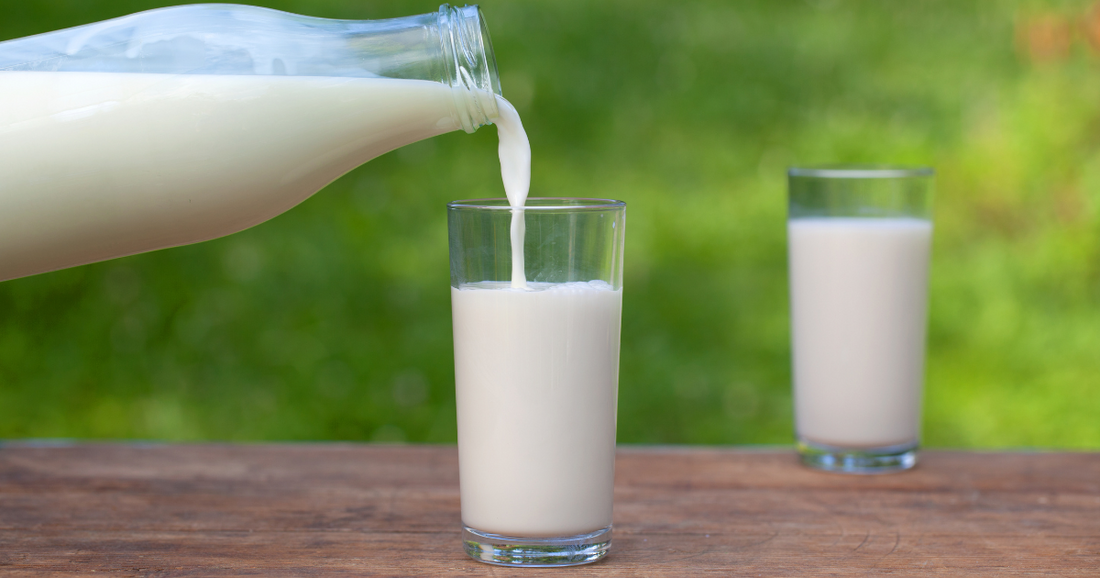For many of us, milk isn’t just a drink — it’s part of daily life. Whether it’s in your morning coffee, poured over cereal, or blended into a smoothie, milk and its alternatives are everywhere.
But if you’re living with Type 2 diabetes or high blood sugar, you may wonder: Does milk help or hurt my glucose levels?
The answer: it depends on the type of milk you choose. Some options are surprisingly blood sugar–friendly, while others can send glucose levels on a roller coaster.
Let’s take a look at the best and worst milk choices — explained simply, so you know exactly what to pour into your glass.
1. How Milk Affects Blood Sugar
Milk naturally contains lactose, a sugar that raises blood glucose when digested. The impact depends on:
- Carbohydrate content (how much sugar is in the milk)
- Protein and fat (which slow down sugar absorption)
- Portion size (a splash in coffee vs. a tall glass makes a difference)
Not all milks are created equal. Some are naturally lower in carbs, while others — especially flavored or sweetened versions — can spike blood sugar quickly.
2. Best Milk Options for Blood Sugar Control
These choices are generally the most diabetes-friendly:
1. Unsweetened Almond Milk
- Carbs: 1–2 g per cup
- Why it’s good: Very low in carbs, often fortified with calcium and vitamin D.
- Best use: Great for cereal, smoothies, or coffee without raising glucose much.
2. Unsweetened Soy Milk
- Carbs: 4–5 g per cup
- Why it’s good: Higher protein content than most plant-based milks, which helps keep you fuller.
- Tip: Choose unsweetened to avoid hidden sugar.
3. Cow’s Milk (in Moderation)
- Carbs: ~12 g per cup (from lactose)
- Why it’s okay: Provides protein, calcium, and B vitamins. The fat in whole milk can slow sugar absorption compared to skim.
- Best use: Stick to small portions and pair with fiber/protein-rich foods.
4. Flaxseed or Pea Protein Milk (Unsweetened)
- Carbs: ~1–3 g per cup
- Why it’s good: Newer options, often fortified, with low carbs and added protein.
- Best use: Smoothies or shakes.
3. Milk Options to Limit or Avoid
Some milks may seem healthy but can raise blood sugar more than you think:
1. Oat Milk
- Carbs: 14–20 g per cup
- Why to limit: Naturally higher in carbs, and some brands add sugar. Tends to spike glucose quickly.
2. Rice Milk
- Carbs: 20+ g per cup
- Why to avoid: Very high in carbs, low in protein, often causes sharp glucose spikes.
3. Flavored or Sweetened Milks
- Examples: Chocolate milk, vanilla almond milk, sweetened soy milk
- Why to avoid: Added sugars can double the carb count, turning milk into a dessert.
4. Tips for Choosing the Right Milk
- Always read the label: Check total carbs and added sugars.
- Stick to unsweetened: Most flavored plant-based milks hide 10–15 g of added sugar.
- Portion matters: A splash in coffee won’t hurt, but a full glass might.
- Pair smartly: Drinking milk with protein or fiber-rich foods can help balance glucose impact.
5. FAQs
Q: Is skim milk better than whole milk for diabetes?
A: Not necessarily. Skim milk has the same carbs as whole milk but lacks the fat that slows absorption. Whole or 2% may actually be gentler on blood sugar in small portions.
Q: Can I drink milk at night if I have Type 2 diabetes?
A: Yes, but keep it small and unsweetened. Pairing with a high-protein snack can help prevent overnight spikes.
Q: Is lactose-free milk better for blood sugar?
A: Lactose-free milk still has carbs — the lactose is just broken down. It won’t prevent spikes, but may be easier to digest.
Q: Is plant-based milk always better?
A: Not always. Almond and soy are low-carb choices, but oat and rice milk can spike blood sugar more than regular cow’s milk.
Quick Recap
- Best choices: Unsweetened almond, soy, flax, or pea protein milk.
- Okay in moderation: Cow’s milk (preferably whole or 2%).
- Limit or avoid: Oat, rice, and flavored/sweetened milks.
- Golden rule: Unsweetened and low-carb is your friend.
The Bottom Line
Milk can fit into a Type 2 diabetes–friendly lifestyle — if you choose wisely. By picking low-carb, unsweetened options and keeping portions in check, you can enjoy your morning coffee or cereal without the glucose roller coaster.
How Diabec Fits In
Making smart choices like the right milk is one part of managing glucose. Diabec combines six natural ingredients — including bitter melon and fenugreek — to support balanced glucose levels, curb cravings, and help you feel more in control each day.

